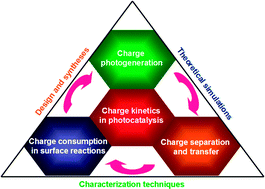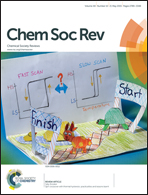Steering charge kinetics in photocatalysis: intersection of materials syntheses, characterization techniques and theoretical simulations
Abstract
Charge kinetics is highly critical in determining the quantum efficiency of solar-to-chemical conversion in photocatalysis, and this includes, but is not limited to, the separation of photoexcited electron–hole pairs, utilization of plasmonic hot carriers and delivery of photo-induced charges to reaction sites, as well as activation of reactants by energized charges. In this review, we highlight the recent progress on probing and steering charge kinetics toward designing highly efficient photocatalysts and elucidate the fundamentals behind the combinative use of controlled synthesis, characterization techniques (with a focus on spectroscopic characterizations) and theoretical simulations in photocatalysis studies. We first introduce the principles of various processes associated with charge kinetics that account for or may affect photocatalysis, from which a set of parameters that are critical to photocatalyst design can be summarized. We then outline the design rules for photocatalyst structures and their corresponding synthetic approaches. The implementation of characterization techniques and theoretical simulations in different steps of photocatalysis, together with the associated fundamentals and working mechanisms, are also presented. Finally, we discuss the challenges and opportunities for photocatalysis research at this unique intersection as well as the potential impact on other research fields.


 Please wait while we load your content...
Please wait while we load your content...